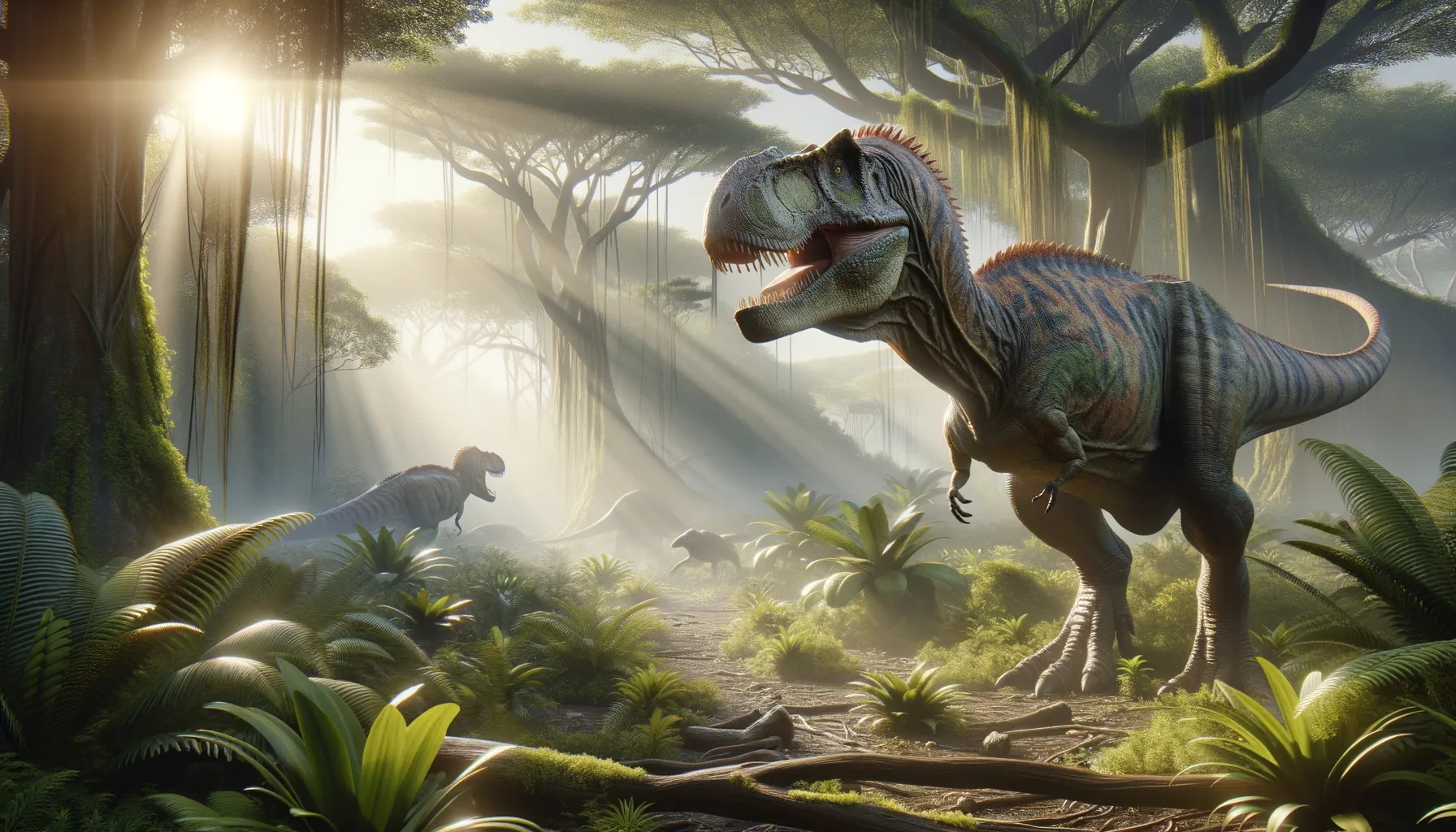
Rajasaurus
King of the Cretaceous with a royal horn.
Period
Cretaceous
Length
About 30 feet (9 meters) long.
Height
Around 9 feet (2.7 meters) tall.
Weight
Approximately 2,200 pounds (1,000 kg).
Rajasaurus was a large carnivorous dinosaur that roamed the land of what is now India during the Cretaceous period. Its name, meaning 'king lizard', reflects its position atop the food chain. This theropod is known for its robust build and distinctive horn on its forehead. Fossils of Rajasaurus provide valuable insights into the prehistoric ecosystems of the Indian subcontinent, contributing to our understanding of dinosaur evolution and diversity.
Diet
Rajasaurus was a carnivore, feeding primarily on other dinosaurs. It likely hunted smaller herbivorous dinosaurs and possibly scavenged when necessary.
Hunting
Despite its moderate speed, Rajasaurus relied on ambush tactics to catch prey. Its robust build and powerful jaw suggest it could deliver lethal bites, an advantage in both hunting and defending territory.
Environmental challenges
Living during the late Cretaceous period meant dealing with varying climatic conditions and competition for food. Changes in sea levels and volcanic activities likely impacted its habitat. Evolving alongside other predators, Rajasaurus had to stay agile and resourceful to maintain its position in the food chain.
Speed
Moderate, not the fastest runner due to its build.
Lifespan
Estimated to be around 20 to 30 years.
First discovery
First discovered in India in the early 2000s.
Fun Facts
- Rajasaurus was a meat-eating dinosaur that lived about 65 million years ago in what is now India.
- Its name means 'king lizard', reflecting its position as a top predator.
- Unlike some other large theropods, Rajasaurus had a distinctive horn on its head.
- Rajasaurus was around 30 feet long, making it a formidable predator of its time.
- This dinosaur is known from only partial fossils but scientists have pieced together its appearance through careful study.
- Rajasaurus lived in a time when India was an island continent, before it collided with the rest of Asia.
- The discovery of Rajasaurus has helped fill in gaps about dinosaur evolution in the Southern Hemisphere.
Growth and Development
Rajasaurus hatchlings started small, growing rapidly in the first few years to reduce predation risks. They likely experienced a juvenile phase with distinct features to help scientists differentiate between life stages. Growth rates suggest that reaching maturity required significant caloric intake, plausibly impacting local ecosystems.
Habitat
Rajasaurus thrived in semi-arid environments interspersed with rivers and lush vegetation. The Indian subcontinent's unique geography shaped its habitat, offering a mix of flatlands and occasional forested areas. This terrain provided both cover and avenues for ambush strategies.
Interaction with other species
As an apex predator, Rajasaurus interacted mainly with potential prey, including smaller dinosaurs and herbivores. Competition with other carnivores likely influenced its hunting territories. Fossils indicate possible coexistence with other theropods, suggesting niche differentiation to reduce direct conflict.
Natural lifespan
Rajasaurus could naturally live up to 30 years.
Reproduction
Rajasaurus likely laid eggs in nests made from surrounding vegetation. Parental care may have been minimal, with juveniles left to fend for themselves once hatched. The reproductive strategy focused on producing multiple offspring, ensuring some survived to adulthood.
Social behaviour
Primarily solitary, Rajasaurus was territorial, maintaining vast hunting grounds. Occasional interactions with others of its kind involved displays of dominance or mating. Fossil evidence of injuries suggests intraspecies conflicts were not uncommon.
Fossil locations
Rajasaurus fossils have been primarily found in the Narmada region of India. The discovery helped highlight the diverse dinosaur fauna of the Indian subcontinent. It provided essential data about the region’s geological and ecological history during the Cretaceous.
